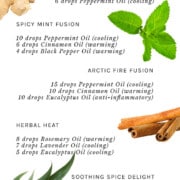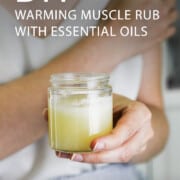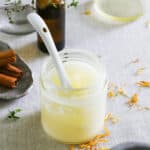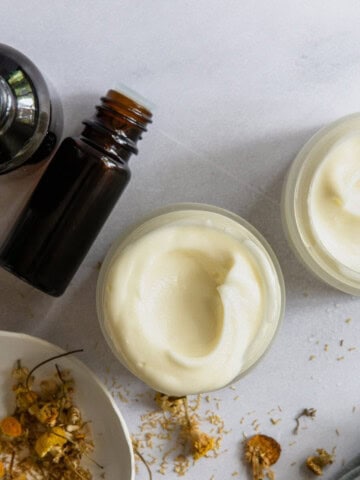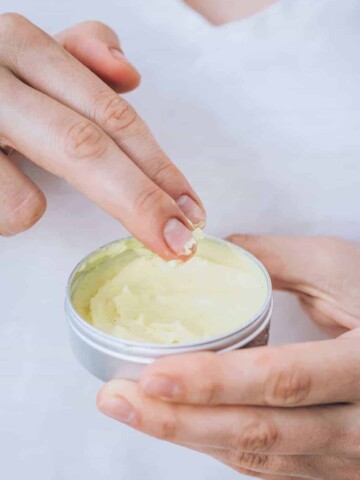Create your own DIY Icy Hot recipe with essential oils that provide both cooling and warming sensations. This homemade icy hot-style balm is super creamy, so a little goes a long way, and it’s loaded with natural ingredients and essential oils guaranteed to soothe inflammation and dull the ache.
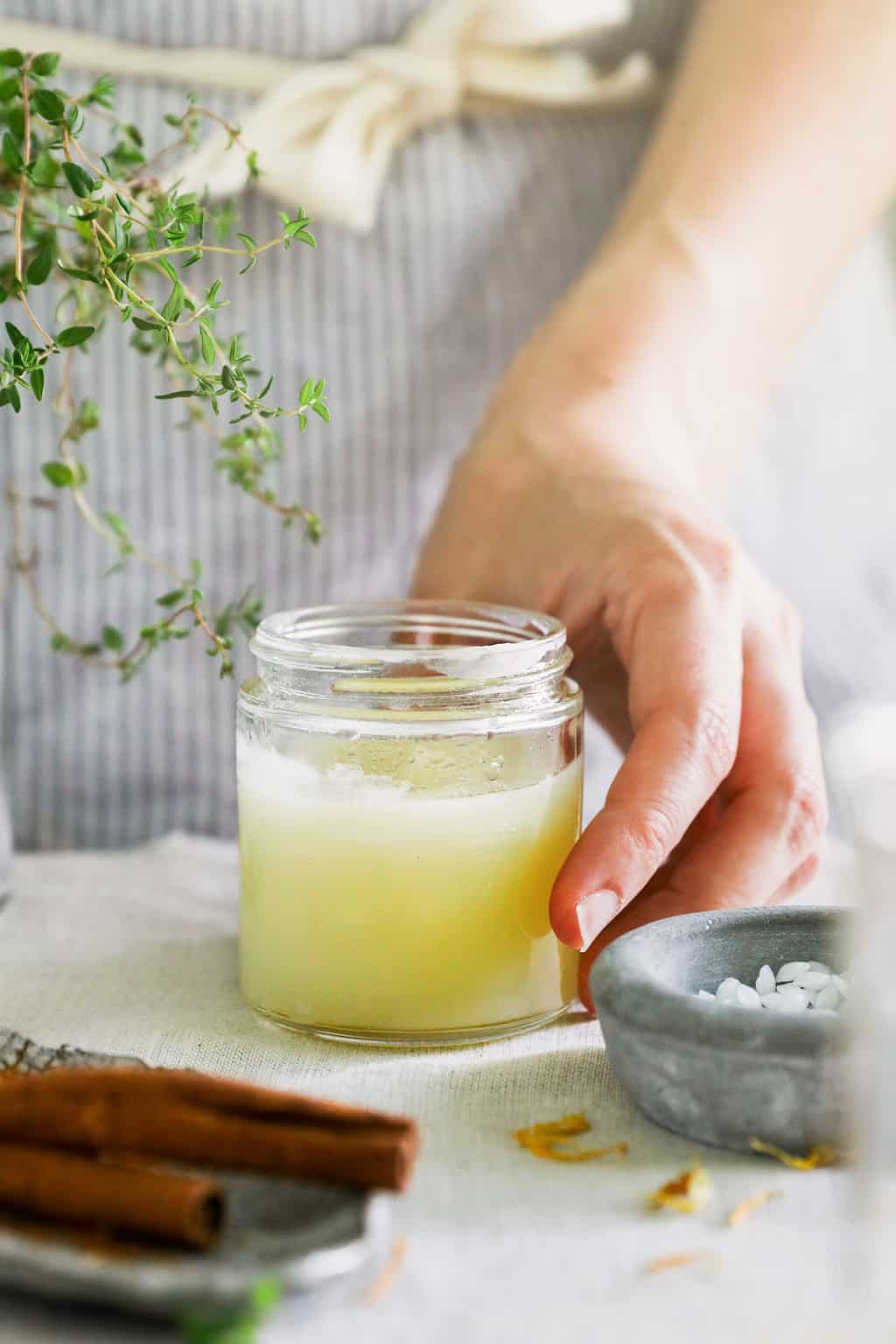
Raise your hand if this has ever happened to you: you walk into the gym feeling great, walk out an hour later feeling ah-mazing, and then wake up the next day feeling like you were hit by a truck.
I know, no pain, no gain, but that sting is rough. So why not make a batch of this warming muscle rub to help soothe tense, tired muscles?
Jump to:
What Is DIY Icy Hot?
This phrase refers to a homemade concoction created by mixing various household ingredients to mimic the effects of the well-known over-the-counter pain relief product.
Homemade Icy Hot typically blends a menthol-based or cooling agent like peppermint oil with a warming substance such as cayenne pepper or ginger powder. This balm uses essential oils like camphor, peppermint, and cinnamon to give it that warm-cool sensation that’s so good for muscles.
Muscle rubs have become popular because they can do wonders for soothing minor muscle aches. This homemade muscle rub with essential oils is surprisingly simple and so, so helpful when it comes to pain and inflammation.
Muscle Rub Essential Oils
To create a balanced experience that combines both cooling and warming sensations, consider combining oils from both categories. For example, a blend of peppermint (cooling) and ginger (warming) can provide a well-rounded effect.
Cooling Essential Oils
Camphor — Used topically to increase local blood flow and reduce pain and itching [source]. It’s considered a “counterirritant,” which means that it can help reduce pain and swelling by causing irritation.
Peppermint — Like camphor, the menthol found in peppermint is also thought of as a counterirritant. It works by causing the skin to feel cool, then warm, which helps distract you from muscle, joint, and knee pain [source]. One study even found that topical menthol-based muscle rubs were found to be significantly better at relieving pain than ice [source].
Eucalyptus — Eucalyptus oil is an anti-inflammatory and an analgesic. When used in homemade muscle rub, it helps to soothe both the inflammation and pain associated with things like rheumatoid arthritis, osteoarthritis, and even muscle injury [source].
Spearmint — Similar to peppermint but milder, spearmint oil provides a gentle cooling sensation and a pleasant aroma.
Wintergreen — Contains methyl salicylate, providing a cooling effect. It's often used in topical products for pain relief.
Lavender — While lavender is generally associated with calming effects, it also has a mild cooling sensation that can soothe irritated skin.
Warming Essential Oils
Cinnamon — Known for its warming properties, cinnamon oil can stimulate blood flow and provide a comforting sensation. Cinnamon has anti-inflammatory properties, which can reduce swelling and soothe muscle soreness. It's especially helpful in treating age-related inflammatory conditions [source].
Clove — Clove works by providing a slight numbing sensation to soothe pain.
Keep in mind that cinnamon and clove are “hot” oils and may cause irritation in sensitive individuals. Dilute to .5% (1 drop per 2 teaspoon carrier oil) and always patch test before using.
Ginger — A warming oil that is beneficial for soothing sore muscles and joints.
Black Pepper — Has a heating effect and is often used in massage blends to alleviate muscle stiffness.
Rosemary — Known for its ability to increase circulation, rosemary oil can impart a warming sensation when applied topically.
Essential Oil Muscle Rub Recipe
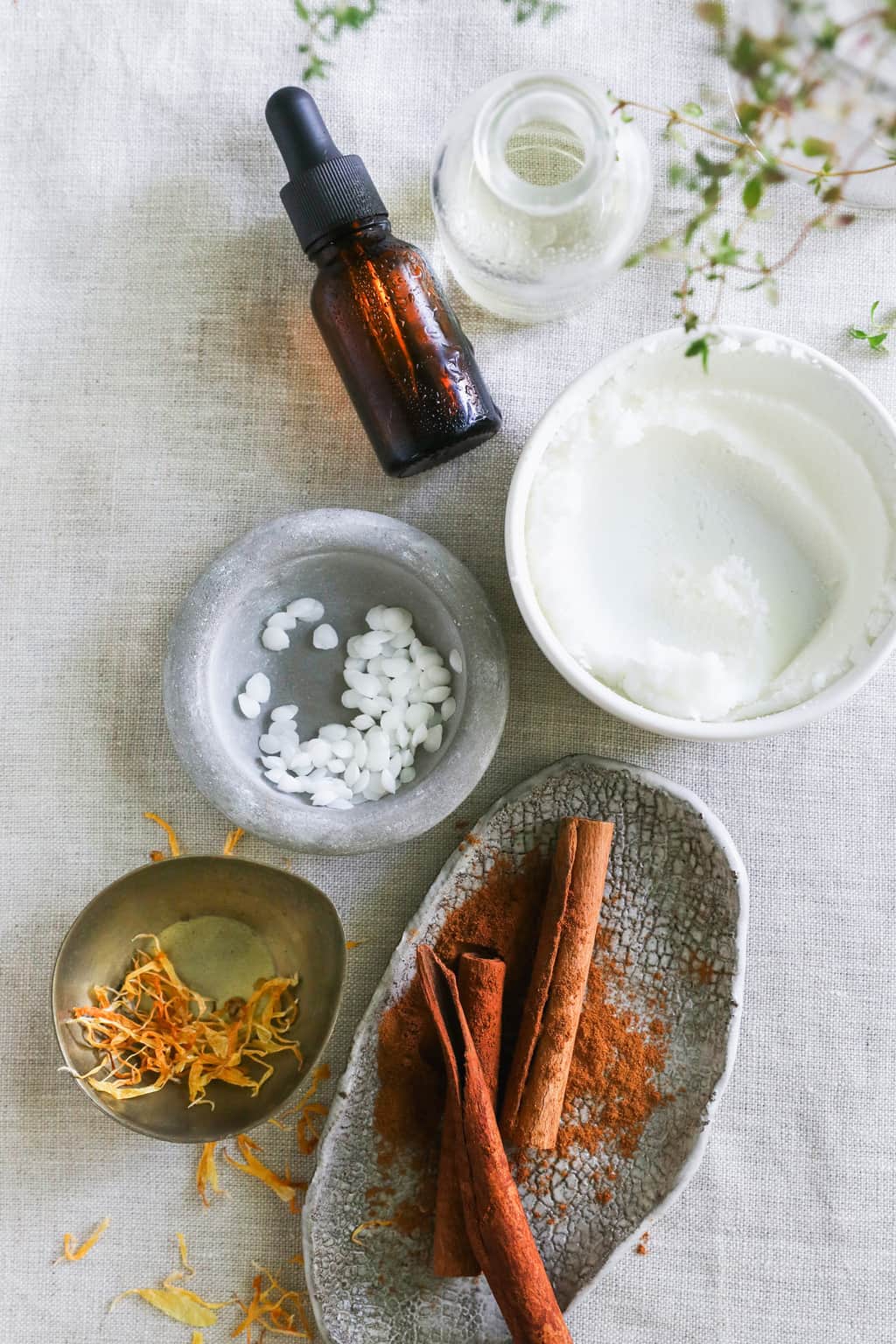
Creating a DIY Icy Hot recipe involves combining essential oils that provide both cooling and warming sensations. Here are a few essential oil blend ideas to make your own homemade icy hot recipe:
For the base you'll need:
- 2 oz olive oil
- 2 oz shea butter
- 2 tablespoon beeswax pellets
- 5 oz glass jar or tin for storage
Icy Hot Essential Oils
You'll need 27 - 36 drops of essential oil per ounce of oil and wax split between cooling and warming essential oils. Since we have 5 ounces of carrier oil and wax, use 135 drops for a 3% dilution or 180 drops for a 4% dilution.
This balm is intended for occasional use, not daily application. Reduce the dilution to 2% (18 drops per ounce) if you plan to use it more regularly.
1. Classic Icy Hot Blend
- 54 drops Peppermint (cooling)
- 43 drops Eucalyptus (cooling)
- 38 drops Wintergreen (cooling and slightly warming)
2. Warming Citrus Twist
- 50 drops Sweet Orange
- 45 drops Ginger (warming)
- 40 drops Peppermint (cooling)
3. Spicy Mint Fusion
- 67 drops Peppermint (cooling)
- 67 drops Black Pepper (warming)
- 2 drops Clove Bud (warming)
4. Arctic Fire Fusion
- 58 drops Peppermint (cooling)
- 10 drops Cinnamon (warming)
- 40 drops Eucalyptus (anti-inflammatory)
5. Herbal Heat
- 54 drops Rosemary (warming)
- 47 drops Lavender (cooling)
- 34 drops Eucalyptus (cooling)
6. Soothing Spice Delight
- 48 drops Peppermint (cooling)
- 48 drops Ginger (warming)
- 40 drops Cardamom (warming)
Instructions

Step 1 | Prepare the base
Melt the shea butter and beeswax in a double boiler or microwave. Stir in the olive oil.
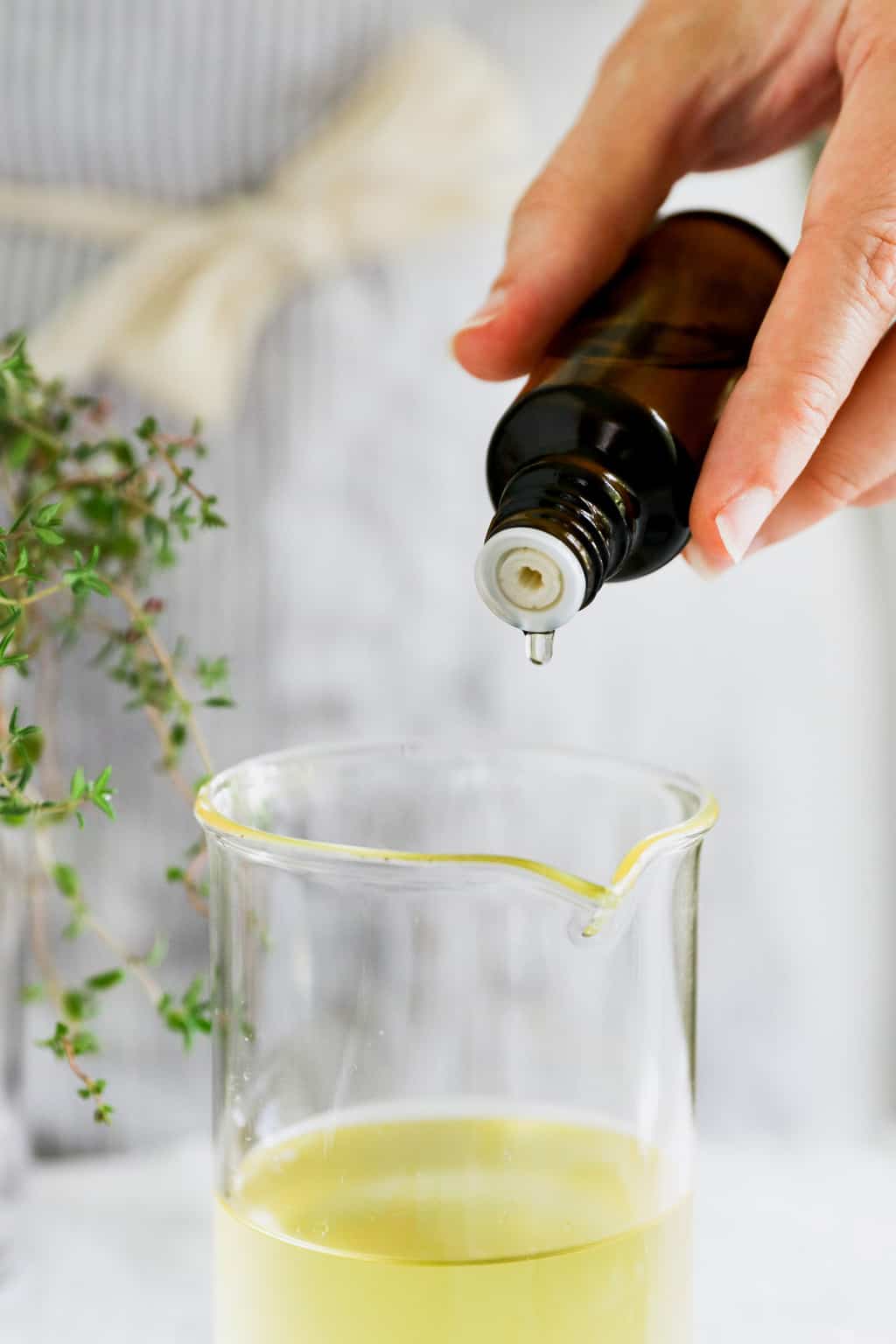
Step 2 | Add essential oils
Once completely melted, let it sit for a few minutes to cool slightly. Then add the essential oil drops and stir to combine.
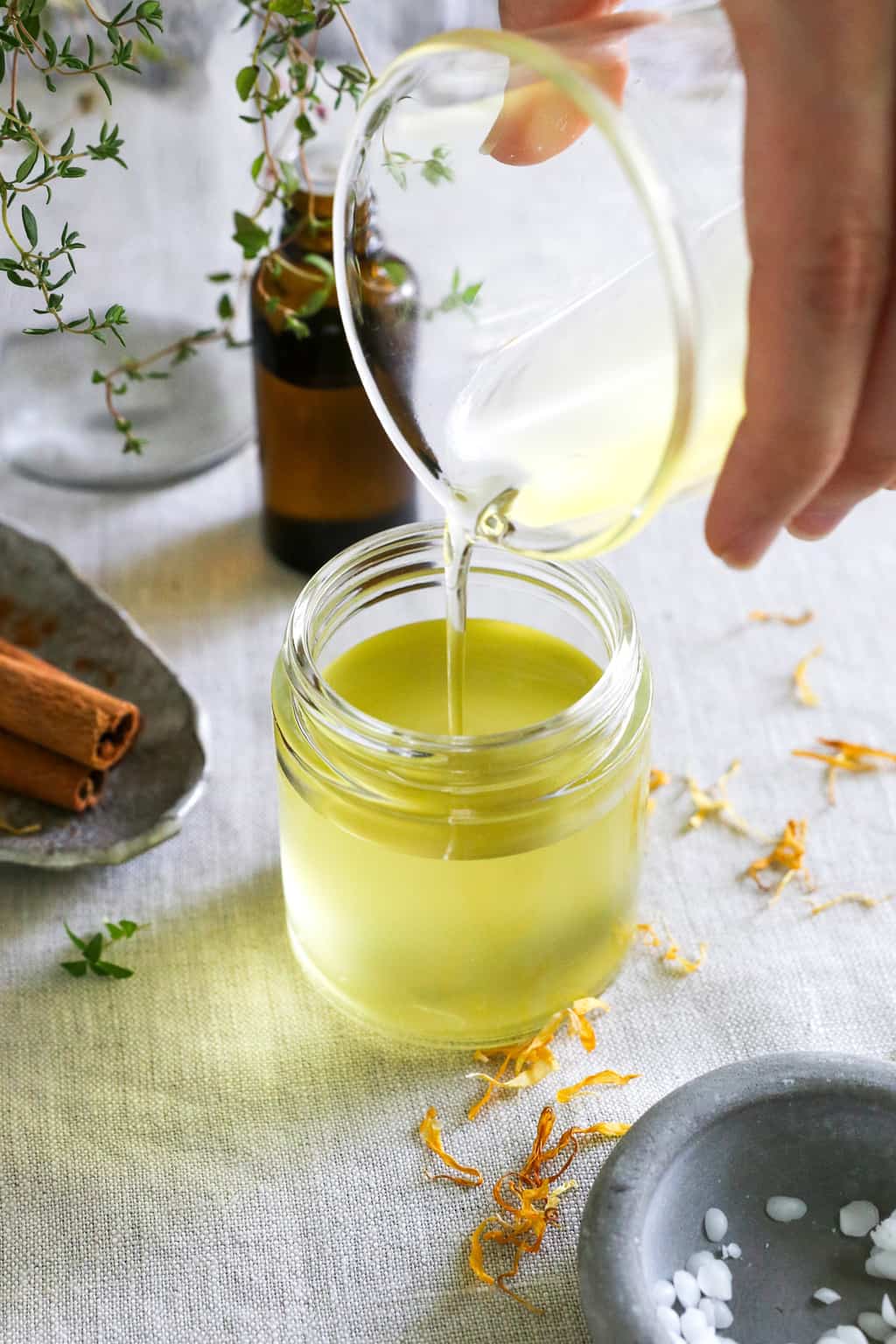
Step 3 | Pour into container
Pour the mixture into a clean, dry glass jar or tin for storage. Let the muscle rub solidify at room temperature or in the refrigerator if you're in a hurry.
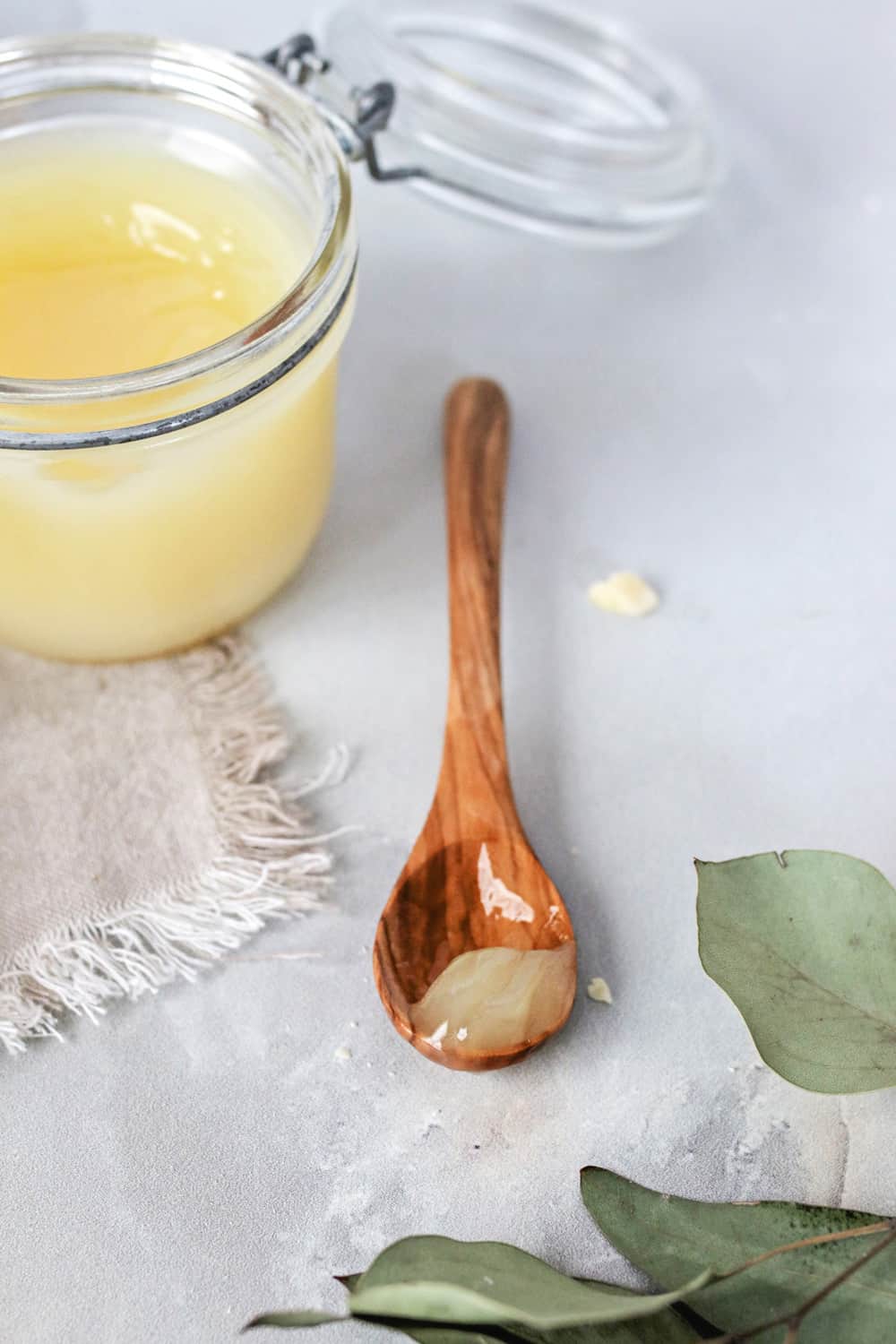
Step 4 | Using the rub
Massage a small amount of the warming muscle rub recipe onto sore or tense muscles as needed.
Substitutions
If you'd like more of a warming effect, experiment with adding more essential oils a little at a time until you reach a strength you like. Feel free to sub out the essential oils or add any other oils you'd like.
For a vegan balm, use candelilla or carnauba wax in place of the beeswax.
Calendula oil — Calendula can help soothe swollen muscles and calm irritated skin, so I like to include it in my homemade muscle rub. Try using a calendula-infused carrier oil if you prefer.
Using Homemade Icy Hot Balm
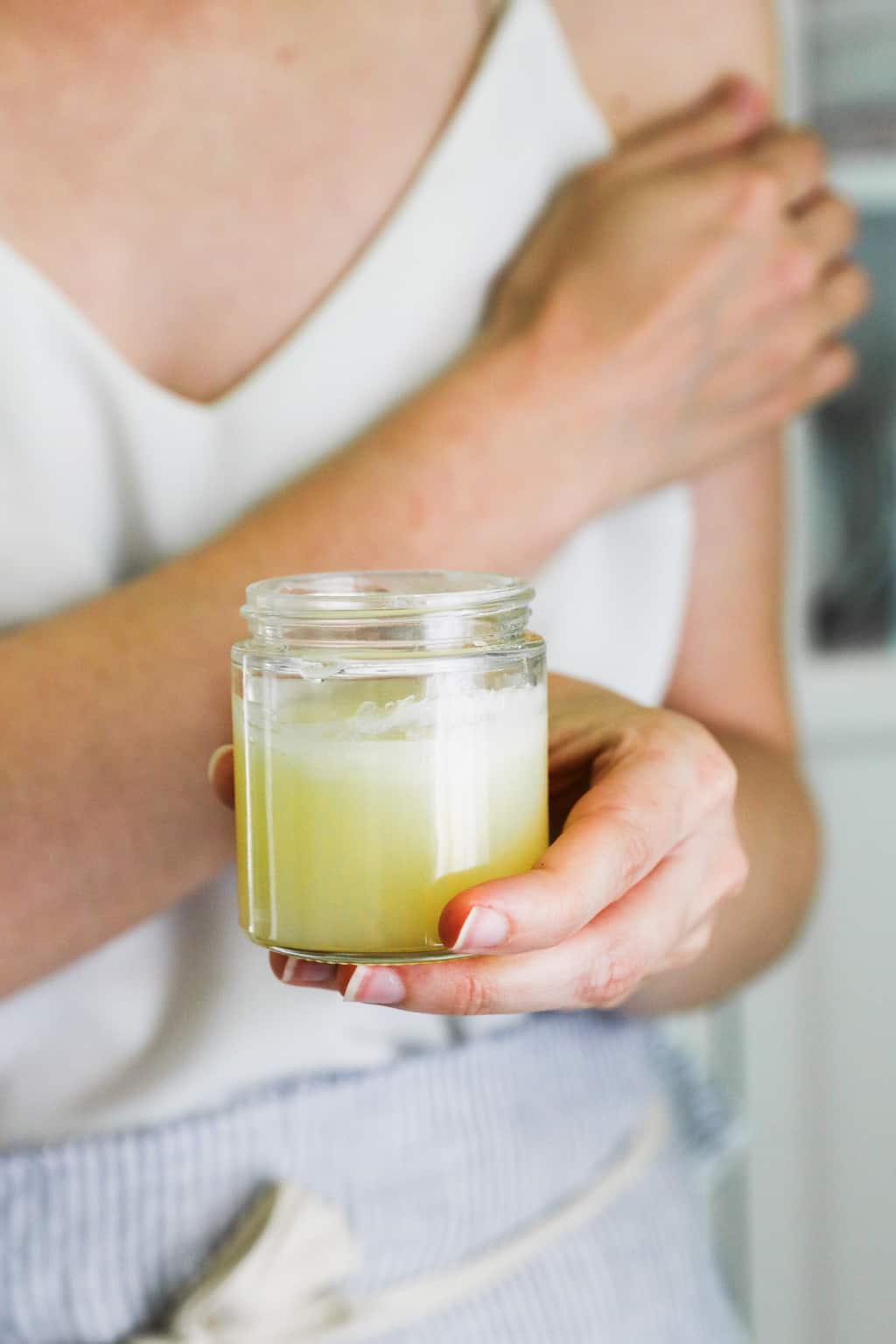
This homemade muscle rub has a creamy, lotion-like consistency that swipes on smoothly and sinks in quickly. The resulting mixture is then applied topically to soothe tired muscles as well as headaches, colds, and sinus pain.
Apply a pea-sized amount to the painful area and massage it into the skin for instant relief. Just a dab or two applied directly to hot spots provides a temporary sensation of both cold and heat.
Storage
Store your DIY muscle rub in a cool, dark place to preserve the quality of the essential oils. Should last 6 months to a year.
The rub will solidify over time, but you should be able to soften it with your hands before applying. Don't forget to perform a patch test before applying to a larger area to ensure you don't have any adverse reactions.
FAQ
I would just leave it out entirely and add a few extra drops of peppermint oil in its place. Peppermint creates a strong cooling sensation, so you might not even miss the camphor.
Sure! A few drops of chamomile, ylang ylang, or lavender essential oil can give you a fresh scent while also boosting your balm's soothing effects.
Yes, solid beeswax can be substituted for the beeswax pastilles. But since I haven't tried it myself, I don't know how much you'll need. It's hard to mess up this recipe, so I recommend just eyeballing the beeswax, and if you need more, re-melting the balm and adding more wax.
Yes, try this massage bar recipe that's perfect for a foot massage before bed.
Yes, extra virgin olive oil is ideal.
We're getting our menthol from peppermint essential oil. But if you would prefer a stronger warming effect, try using straight menthol oil.
Since these essential oils can be incredibly irritating to sensitive skin, I like to go easy on them. If you would prefer a stronger warming effect, then add more essential oils (slowly and carefully, testing the mixture every few drops) until you reach a strength that works for you.
No, they're not all 100% necessary. If you're having trouble finding the oils or your homemade rub is getting pricey, then you can limit your essential oils to just peppermint and cinnamon and still get a warming effect.
Warming Muscle Rub
Equipment
- Double boiler or microwave-safe bowl
- Two 4-ounce jars
Materials
- ¼ cup olive oil
- ¼ cup shea butter
- 2 tablespoons beeswax pellets
- 35 drops camphor essential oil
- 35 drops peppermint essential oil
- 20 drops eucalyptus essential oil
- 20 drops ginger essential oil
- 15 drops black pepper essential oil
- 5 drops cinnamon essential oil
Instructions
- Melt the olive oil, shea butter, and beeswax pellets in a double boiler or microwave-safe bowl in the microwave.
- Once completely melted, let it sit for a few minutes to cool slightly. Then add the essential oils and stir to combine.
- Pour the mixture into a lidded jar and let it sit until solidified. You can put it in the refrigerator for 20 minutes to speed things up.
- To use, massage a small amount of muscle rub onto the affected area.

